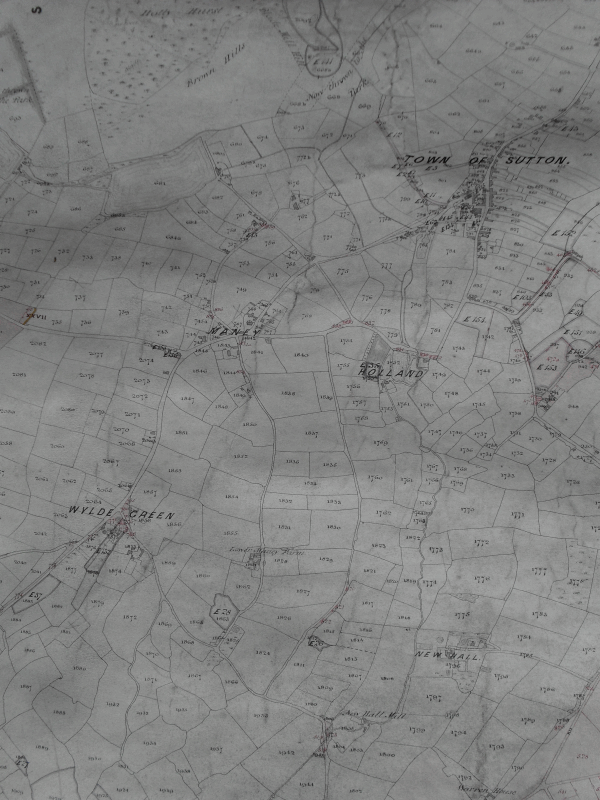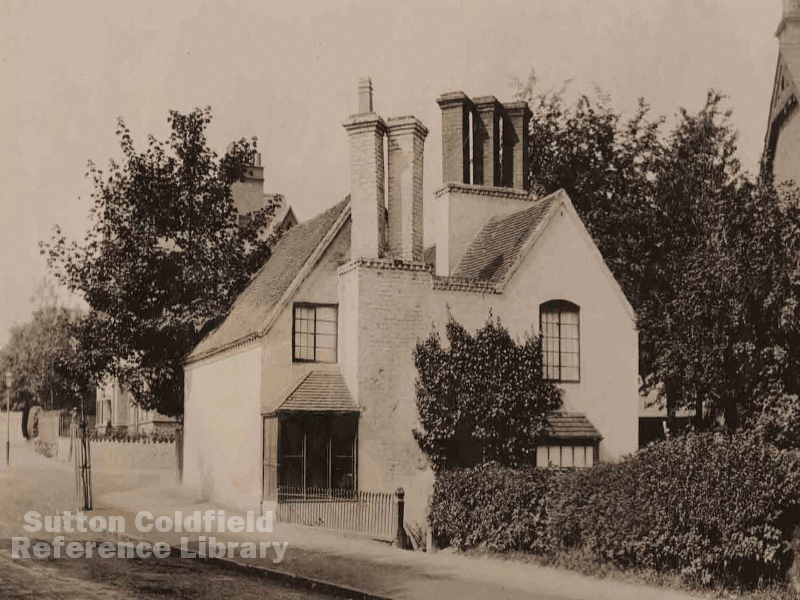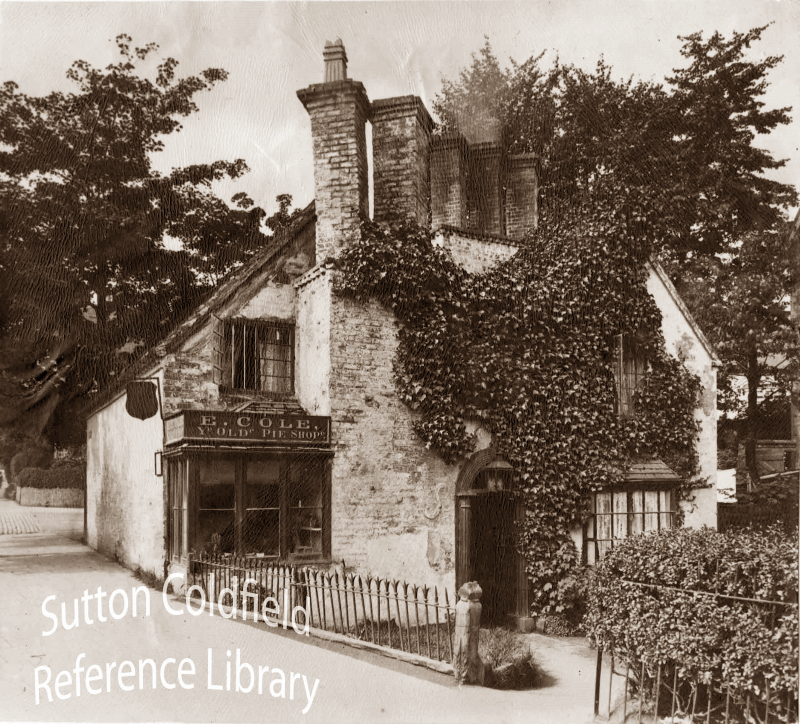Prehistoric travellers made pathways through the countryside, finding the firmest routes to cross marshy valleys. One such, the valley of the E brook in Sutton Coldfield (where The Mall now stands) was a morass of quicksands and bogs, and the old pre-Roman saltway followed the ancient pathway across it on an embankment or causeway, now Clifton Road. Later, another causeway was made (now The Parade) which served as a dam to form a large pool providing a head of water for a mill, as well as carrying the roadway across the valley.
It was the miller’s job to maintain the road on its embankment, and the bridge over the E brook. The bridge was near the south end of The Parade, and nearby there was a white cottage, the last house in Maney. Richard Holbeche, writing in the 1890s about his childhood memories, remembered it as “the little white house just beyond the bridge - a wire covering to the window looking up the hill towards the Cup suggested that a dairy was inside. Hayward, the present owner of the Manor, lived there in happy humbleness. He was a wheelwright and had a wooden shed just where the entrance to the Manor Road now is.”
Thomas Hayward had grown rich as a timber merchant and property developer, following in his father’s footsteps, who also began as a wheelwright and pumpmaker. Hayward was one of the leaders of the challenge to the Warden and Society in 1855 which resulted in a public enquiry into the running of the Corporation; the Commissioner found that there was no substance to the complaints, and Hayward was accused of dishonesty, to the delight of the Sutton gentry.
Living in the white cottage, then known as Maney Cottage, in 1891 was Frederick Cole, a 30-year old carpenter, with his wife and baby daughter. By this time the street had been renamed “The Parade”, with a row of shops extending from the bottom of Mill Street; Maney Cottage was no longer a lonely outpost, but surrounded by new housing. Elizabeth Cole saw an opportunity, and converted the room next to the street into a shop, describing herself, according to the 1901 census, as a confectioner and shopkeeper.
Meat pies were a staple of the Victorian diet, and Mrs. Cole decided to specialise in them, putting up her sign “Ye Olde Pie Shoppe”. The shop was demolished in 1913 to make way for six shops, completing the Parade of shops from Mill Street to Manor Road, but the Old Pie Shop, with its tall chimneys, was remembered long after - “the shop window was on the Parade, but the pavement was raised up so you had to look down to see into the shop, the entrance to which was down four steps, where there was a warning - bend or bump. Once inside the shop, where cooked meats and pies were sold, you could only see the feet of people passing on the pavement”. (Article based on research by Keith Jordan and the late Marian Frankling)

Thomas Hayward the elder wheelwright and pump-maker bought Bleak House from James Pipe in 1848, died in 1848, wife Honoria and six children ince Thomas b. 1823.

